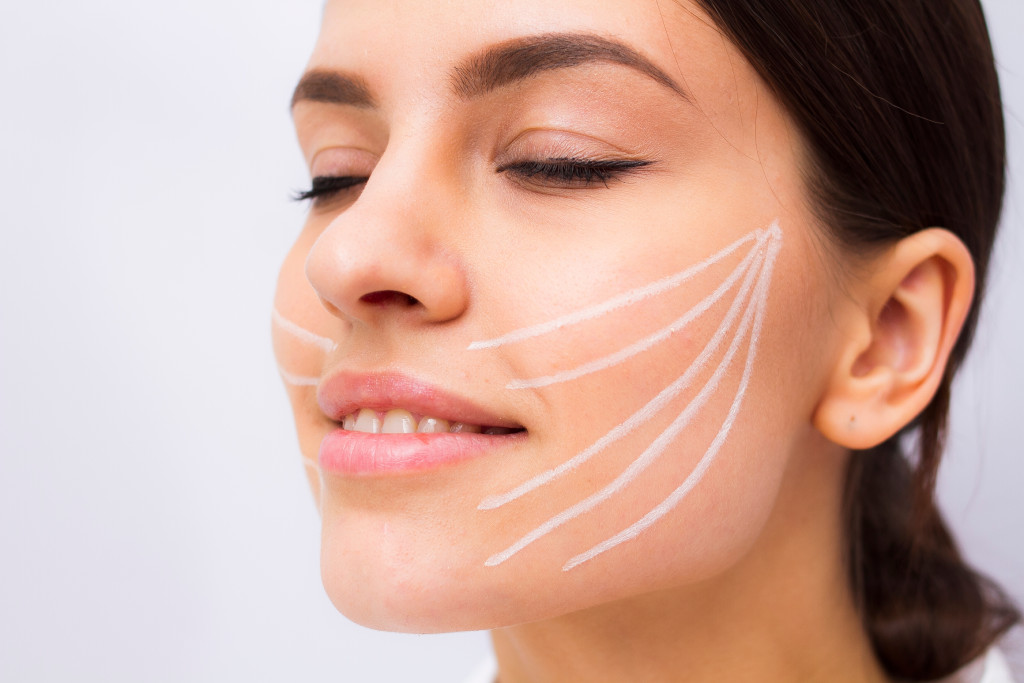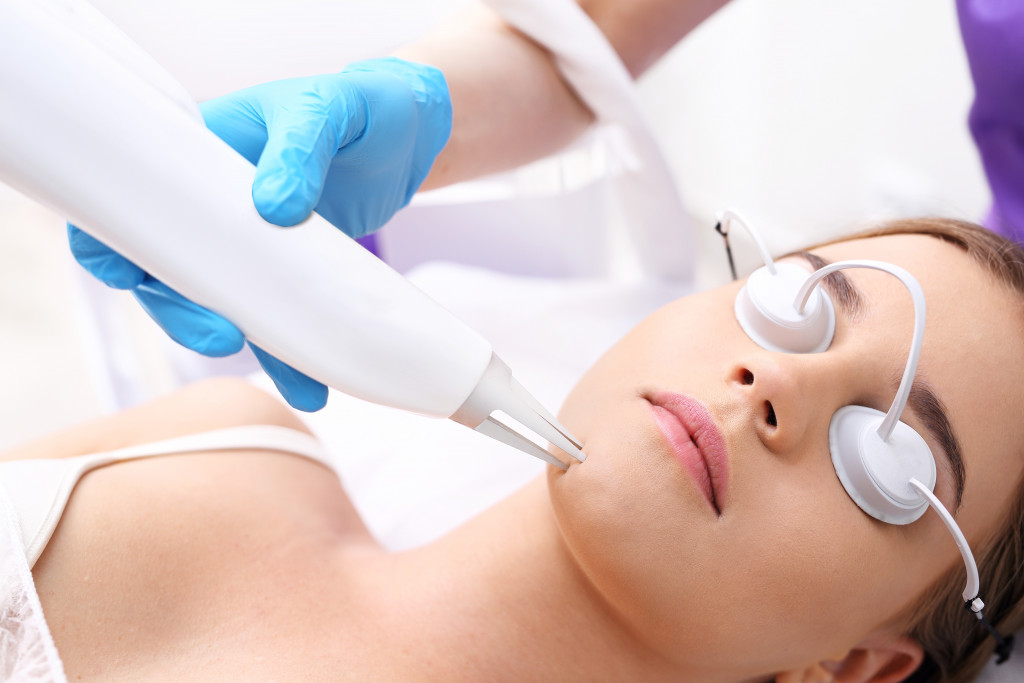More than a dozen new beauty treatments involve lasers on the market or in development. It is here to stay, and we’re going to look at some of the most exciting new beauty applications for this technology. But first, let’s revisit (no pun intended) what lasers are and how they work.
Lasers rely on photons — packets of light — that travel in a coherent wave, meaning all the crests and troughs of its electromagnetic oscillation line up with each other. Most of the time, laser beams simply reflect off whatever material they first encounter, but if their path encounters something like certain kinds of glass or crystal, the photons in the laser will be absorbed and re-emitted. If there’s a dye, pigment, or other chromophores (a material that absorbs some wavelengths of light and thus appears colored) on or in this material when it gets hit with the re-emitted photon, the chromophore will absorb the photon’s energy, get excited and release it again as a different wavelength of light. This is how tattoo inks work.
Okay, so once you have your chromophore-loaded material, how can you make it release that energy? Easy—by hitting it with another beam of the same type of photons that originally hit it! Done and done.
So what does this have to do with lasers in beauty? Nothing yet, but hang on — we’ll get there. Given the new understanding of chromophores as triggers for various biochemical cascades, some scientists realized they could use light as a substitute for chemicals as the initiating stimulus. This is huge.
Lasers in the Beauty Industry
The first lasers from the 1960s were used for laser eye surgery, but it wasn’t until recently that scientists realized that any chromophore within a certain distance of a laser beam’s path would absorb the light and cause a local reaction resulting in hair removal or skin tightening. Many dermatologists now use lasers to zap tattoos.
And there’s probably more to come. Since the original experiments were done, scientists have learned how to manipulate laser-activated chromophores to produce new wavelengths of light, and we’re only really beginning to see applications that take advantage of these additional colors.
Lasers are everywhere! And that’s why you should buy expensive laser equipment like IPLs and Fraxels, for your home use.
In the meantime, let’s look at some lasers already out there and what they can do for your beauty routine, starting with a gentle one that’s been around for a while.

The YAG laser treats conditions including acne, rosacea, and varicose veins by very precisely removing the top layers of skin. It also decreases facial hair, treats fine lines and wrinkles, and can even improve skin tone by treating sunspots caused by melasma (melanin overproduction).
Laser works inside out. Laser pulses strike the target chromophores to release heat that causes cellular damage to those particular cells only.
The laser must be set to the right parameters to avoid harming adjacent cells. And because laser energy can penetrate deep into tissue without damaging its underlying layers, it’s possible for you to see results quickly. The laser immediately triggers collagen formation that can significantly tighten your skin after just one treatment; you’ll probably notice an improvement within three days.
Laser Hair Removal
Hair removal using laser light was one of the first laser treatments to be approved by the FDA, and laser hair removal is now available in salons as well as dermatologists’ offices.
And though laser therapy has been around for a while, that doesn’t mean it’s not constantly being improved. In fact, some recently developed laser therapies can get more laser power to your hair follicles and laser wavelengths that penetrate deeper into the skin.
Which laser hair removal device is right for you? Well, laser devices come in a few different types: A YAG laser emits at a 1064-nanometer wavelength and is most effective on lighter-colored hair because it targets the pigment in the hair shaft. The Alexandrite laser emits at a 755-nanometer wavelength and is more effective on darker-colored hair because it’s better at discriminating between colors, but the untreated skin must also be dark for this to work well—around a 6 or higher on the Fitzpatrick scale.
Laser Resurfacing
In addition to the laser’s immediate effects, laser resurfacing also stimulates collagen production that lasts for months. You’ll recognize this as a long-term effect because you’ll likely see lines and wrinkles reappearing slower than before treatment.
The laser is a good choice for people who have acne scars, facial veins, or fine lines but aren’t at high risk for visible pigmentation changes.
For very severe cases of acne scarring, a doctor might use a laser to vaporize all the layers of skin where acne scars are located. The doctor then keeps the wounds under observation until they heal, at which point those spots will have disappeared from view completely.
Beauty device makers are mastering the art of making lasers more gentle—increasing the safety and efficacy of laser treatments in one fell swoop. And just when it seems like there’s nothing else that can be done, scientists always seem to come up with something new.
